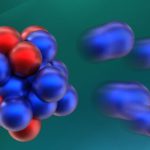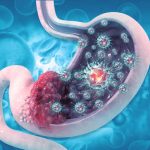In a breathtaking celestial display, NASA’s James Webb Space Telescope (JWST) has unveiled a captivating image of a very young star reminiscent of our own Sun during its early stages. This remarkable image captures supersonic jets of star matter erupting from the poles of the fledgling star, providing a glimpse into the distant past when our Sun might have exhibited a similar appearance. James Webb Telescope captures newborn Sun-like star. This extraordinary photograph showcases the Herbig-Haro object, HH 211, located at a distance of roughly 1,000 light-years within the constellation Perseus.

A Window into Stellar Birth
The image presents a vivid spectacle of stellar birth and transformation. It vividly illustrates the Herbig-Haro phenomenon, where shockwaves are generated through the collision of stellar winds or gas jets expelled by emerging stars with the surrounding gas and dust at remarkable speeds. James Webb Telescope captures a newborn Sun-like star. These phenomena, captured with unparalleled detail by the JWST, offer valuable insights into the early phases of star formation.
The Young Prodigy
The featured star is categorized as a Class 0 protostar, with an age of merely a few tens of thousands of years and a mass equivalent to roughly 8% of our Sun’s. Despite its youthful stage, its future appears promising, as it is expected to evolve into a star akin to our Sun as it matures. The outpouring of gas from its poles, depicted in the image, resembles the energetic exhalation of youth, foreshadowing its destiny to become a radiant celestial body much like our Sun.
Revelation of the Unseen
The JWST’s capacity to detect and interpret the infrared emissions of excited molecules, including molecular hydrogen, carbon monoxide, and silicon monoxide, has facilitated a profound comprehension of the star’s surroundings. This newly disclosed image provides an unparalleled level of intricacy, boasting resolutions 5–10 times higher compared to any previous portrayal of HH 211. Researchers have been able to discern that the object’s outflow is relatively slower, distinguishing it from more advanced protostars with analogous outflows.
Since its launch in 2021 and subsequent data acquisition in 2022, the JWST has revolutionized our understanding of the early universe, delivering awe-inspiring glimpses of the cosmos. It has exposed the existence of the earliest-known galaxies, peered into the enigmatic domain of black holes, and unleashed a deluge of groundbreaking data. The JWST’s capabilities are astonishing, boasting a potency nearly 100 times superior to that of its predecessor, the Hubble Space Telescope.
For further information: https://www.ndtv.com/science
Read our previous articles: https://scitechupdate.com/index.php/treated-wastewater-exerts-an-impact-on-our-rivers/ https://scitechupdate.com/index.php/india-makes-history-by-landing-a-spacecraft-at-the-moons-south-pole/
https://scitechupdate.com/index.php/zinc-air-batteries-could-be-cheaper-and-safer-than-lithium-ion/
https://scitechupdate.com/index.php/android-14-satellite-sms-for-everyone/
https://scitechupdate.com/index.php/chemistry-entrepreneurship/
https://scitechupdate.com/index.php/waste-paper-to-battery-components-for-smarts-phones-vehicles/https://scitechupdate.com/index.php/ai-demonstrated-95-accuracy-in-listening-typing-and-data-processing/
https://scitechupdate.com/index.php/top-7-technology-trends-of-2023-from-ai-to-5d-technology/


Your point of view caught my eye and was very interesting. Thanks. I have a question for you.
Yes, you can ask